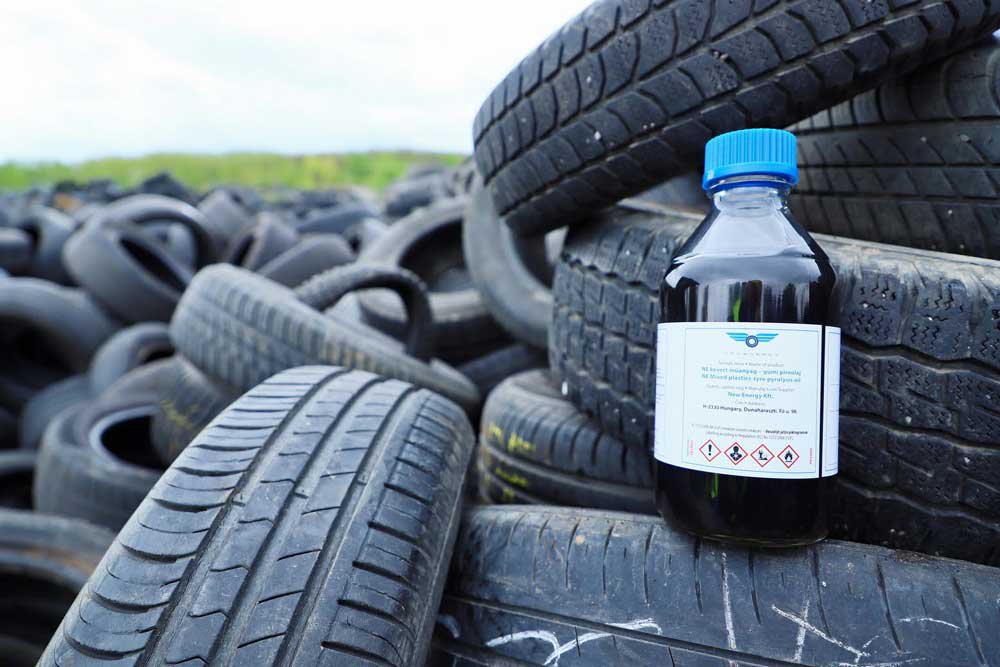
The tire pyrolysis process results in three main products: pyrolysis oil, pyrolysis gas, and char (or recovered carbon black). Here’s an explanation of each:
1. Pyrolysis Oil
What it is: Pyrolysis oil, also called tire-derived oil (TDO), is the liquid fraction produced during the thermal decomposition of tire rubber. It is a dark, viscous liquid with a composition similar to diesel and other fuels.
Applications: Pyrolysis oil has a high calorific value (around 41–44 MJ/kg), making it a valuable source of energy. It can be used as a fuel in industrial burners, boilers, incinerators, and metal smelting plants due to its high energy density and low viscosity. With further refinement or distillation, it could even be used as a substitute for diesel in some engines.
Environmental Benefits: Using pyrolysis oil as a fuel helps to reduce the reliance on fossil fuels and prevents the direct burning of waste tires, which releases harmful gases.
2. Pyrolysis Gas
What it is: Pyrolysis gas, also known as syngas (synthesis gas), is the gaseous product produced during the decomposition process. It primarily consists of light hydrocarbons (such as methane, ethane, and propane) and hydrogen.
Applications: The gas produced is often used to fuel the pyrolysis reactor itself, making the process energy-efficient and self-sustaining. It can also be used as a fuel in other industrial processes, reducing the need for external energy inputs.
Environmental Benefits: By using the pyrolysis gas to power the reactor, the entire process becomes more energy-efficient, reducing the need for additional energy sources and minimizing greenhouse gas emissions.
3. Char (Recovered Carbon Black – RCB)
What it is: Char is the solid residue left after the pyrolysis process. A significant portion of this char is recovered carbon black (RCB), which can be processed to remove impurities like metals and then upgraded for use in various industries.
Applications: Recovered carbon black is used as a reinforcing filler in the rubber and plastic industries, a color pigment, or as a material in batteries and paints. It can also be used in construction materials or as an additive in asphalt and concrete. Additionally, metals like steel wires from tires can be extracted from the char and recycled in the steel industry.
Environmental Benefits: Recovered carbon black offers a sustainable alternative to virgin carbon black, which is usually derived from non-renewable sources like petroleum. Using RCB helps reduce the demand for virgin materials and supports the recycling of waste tires.
Summary of Benefits:
Pyrolysis oil: Provides an alternative energy source and can replace conventional fuels.
Pyrolysis gas: Makes the pyrolysis process energy-efficient and can be used as a fuel.
Char/RCB: Replaces virgin carbon black in industrial applications, reducing resource depletion and environmental impact.
The pyrolysis process not only helps in waste management by converting waste tires into valuable products but also contributes to reducing environmental pollution and supports sustainability.
